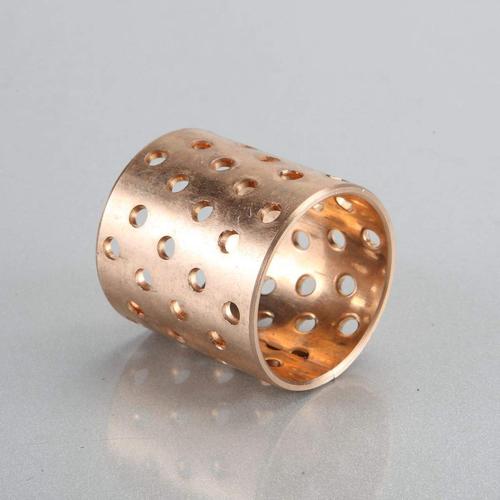Ball Bearings and Bushings: A Comprehensive Guide to Types, Selection, and Maintenance
Ball bearings and bushings are fundamental components in mechanical systems, enabling smooth rotational or linear motion while reducing friction. Ball bearings utilize rolling elements between races, while bushings provide sliding surfaces through sleeve-type designs. Both play critical roles in machinery across automotive, aerospace, and manufacturing industries.
Table of Contents
1. Ball bearings vs bushings comparison2. How to choose ball bearings for industrial applications
3. Bushing materials and lubrication methods
4. Ball bearing installation and maintenance
5. Applications of linear bushings in automation
1. Ball bearings vs bushings comparison

Ball bearings and bushings serve distinct purposes in mechanical systems. Ball bearings excel in high-speed rotational applications through their rolling contact design, offering lower friction coefficients (typically 0.001-0.003) compared to bushings. Common types include deep groove, angular contact, and thrust bearings. Bushings (sleeve bearings) operate via sliding contact, better suited for oscillating motions or heavy load scenarios. Bronze-oilite bushings provide self-lubrication, while polymer bushings offer corrosion resistance. Key selection factors include load capacity (dynamic vs static), RPM requirements, and environmental conditions. Hybrid solutions like igubal bushings combine polymer advantages with bearing-like performance.
2. How to choose ball bearings for industrial applications
Selecting ball bearings requires analyzing multiple parameters. Calculate equivalent dynamic load (P) using ISO 281 standards: P = XFr YFa. Consider ABEC ratings for precision levels - ABEC 7/9 for machine tools vs ABEC 1 for general purpose. Stainless steel bearings (AISI 440C) suit food processing, while ceramic hybrids (Si3N4 balls) handle high temperatures. Sealing options: ZZ metal shields for contamination protection, 2RS rubber seals for liquid exclusion. Always verify bearing clearance (C3 vs C4) relative to thermal expansion needs. Proper preload adjustment prevents skidding in angular contact bearings.
3. Bushing materials and lubrication methods
Modern bushings employ advanced materials for specific operating conditions. Sintered bronze (SAE 841) impregnated with oil delivers maintenance-free operation up to 0.3 m/s. PTFE-lined bushings reduce friction to 0.04-0.15 coefficients. For heavy loads, bimetal bushings combine steel backing with babbit lining. Lubrication techniques vary: oil grooves for continuous lubrication, grease reservoirs in flange bushings, or graphite plugs in dry applications. Recent innovations include GEKO coatings reducing wear rates by 68% in oscillating motions. Always consider PV limits (Pressure × Velocity) when specifying bushing materials.
4. Ball bearing installation and maintenance
Proper bearing installation extends service life significantly. Use induction heaters to achieve 80-110°C mounting temperatures, avoiding direct flame heating. Follow bearing clearance charts: 0.0005" per inch of shaft diameter for C3 clearance. Implement condition monitoring through vibration analysis (ISO 10816 standards) and acoustic emission testing. Common failure modes include flaking (fatigue), smearing (lubrication failure), and electrical erosion. Relubrication intervals follow formula: t = [(14,000,000 / n) - 4d] × K (n=RPM, d= bore mm, K=contamination factor). Always use compatible greases - polyurea thickeners for electric motors, lithium complex for general purpose.
5. Applications of linear bushings in automation
Linear bushings enable precise motion control in automation systems. Profile rail guides support moment loads up to 30% of dynamic rating. Stainless steel linear bushings (LM series) withstand washdown environments in packaging machines. For cleanroom applications, self-lubricating polymer linear bearings eliminate particulate generation. Recent developments include intelligent bushings with embedded sensors monitoring wear (capacitance changes) and load distribution. In robotic arms, crossed roller bushings provide ±0.5 arc-minute positioning accuracy. Always pair linear bushings with proper shaft hardness (HRC 58-62) and surface finish (Ra 0.4μm max).
Understanding ball bearings and bushings is crucial for optimal machinery performance. Whether comparing friction characteristics in high-speed spindles, selecting corrosion-resistant materials for marine applications, or implementing predictive maintenance through vibration analysis, each aspect impacts operational efficiency. Recent advancements in nano-coatings and smart bearing technology continue pushing performance boundaries. For engineers specifying motion components, balancing initial cost against total lifecycle expenses remains critical. Proper selection and maintenance directly correlate with energy savings and downtime reduction.
Conclusion
This comprehensive guide has explored essential aspects of ball bearings and bushings, from fundamental comparisons to advanced maintenance techniques. By understanding material properties, load calculations, and lubrication requirements, engineers can optimize component selection for specific applications. Implementing proper installation procedures and condition monitoring ensures maximum service life and operational reliability. As industrial demands evolve, staying informed about technological advancements remains key to maintaining competitive mechanical systems.




 13869596835
13869596835